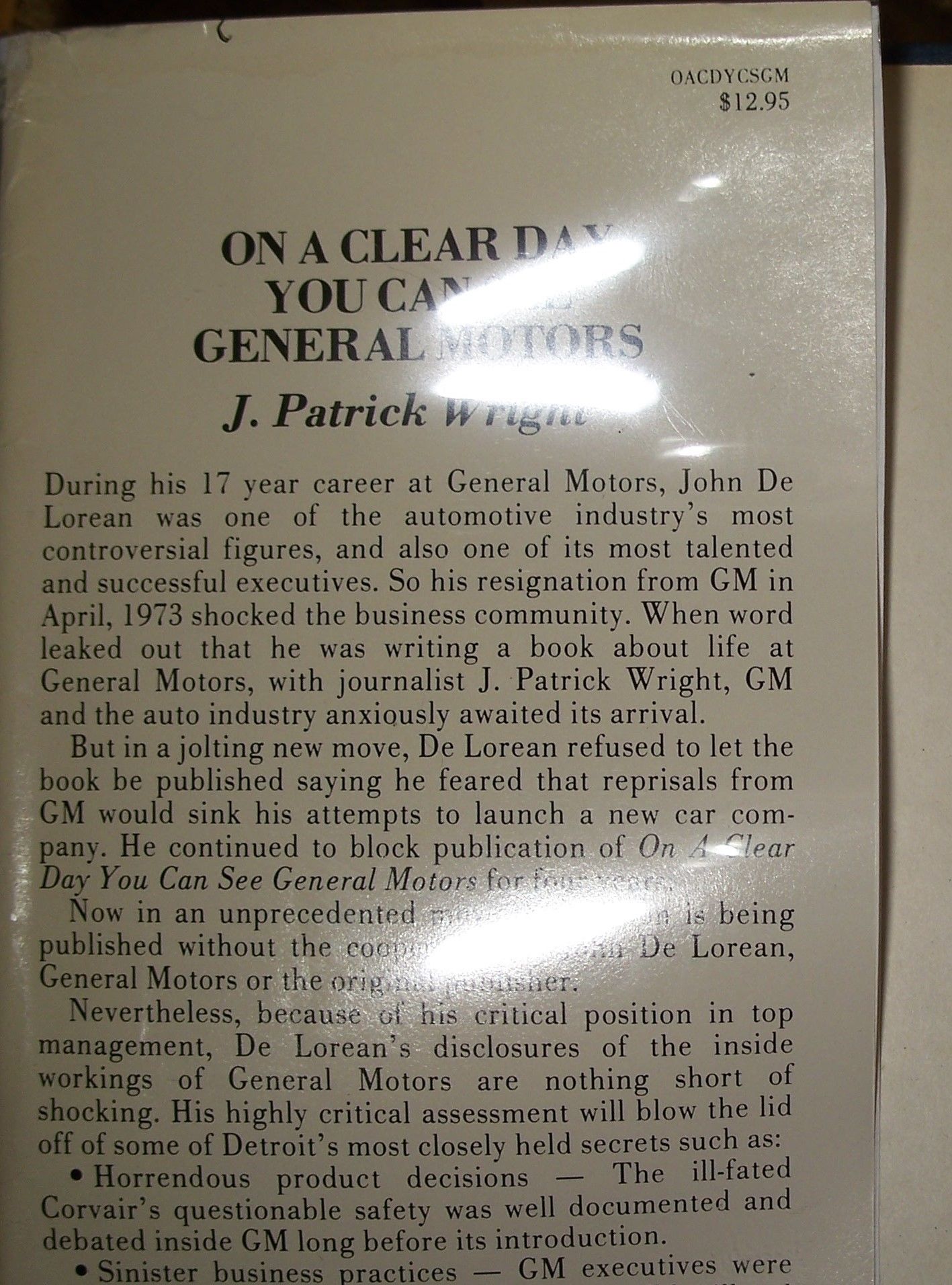On A Clear Day You Can See General Motors

The Detroit River shimmered under a sky so clear it felt scrubbed clean. Sunlight glinted off the Renaissance Center's mirrored towers, piercing the morning haze with an optimistic gleam. From Belle Isle, the vast complex stood proud, a testament to a city’s resilience and the enduring presence of an automotive giant.
This crisp, clear view offers more than just a pretty picture; it symbolizes a moment of relative stability for General Motors (GM), a company deeply intertwined with the fate of Detroit itself.
Once teetering on the brink, GM has navigated a complex path of restructuring, innovation, and a renewed focus on the future, specifically electric vehicles (EVs) and sustainable technologies. The clear day, the visible landmark, serves as a powerful metaphor for a company striving for transparency and a vision of a brighter tomorrow.
A Legacy Forged in Steel and Innovation
The story of General Motors is inextricably linked to the story of Detroit. Founded in 1908 by William C. Durant, GM quickly rose to become the world’s largest automaker, shaping not only the automotive industry but also the economic and social landscape of America.
The company's success fueled Detroit's growth, attracting waves of workers seeking opportunity. Assembly lines hummed, and the roar of engines filled the air, creating a vibrant, bustling metropolis synonymous with the American Dream.
Iconic brands like Chevrolet, Cadillac, Buick, and GMC rolled off the production lines, becoming symbols of American ingenuity and aspiration. These cars were more than just transportation; they were markers of status, freedom, and the open road.
GM’s influence extended far beyond the factory floor. The company pioneered innovative manufacturing techniques, invested heavily in research and development, and even played a significant role in national defense during times of war.
However, the road wasn't always smooth. Challenges mounted in the late 20th and early 21st centuries, as globalization, increased competition, and changing consumer preferences began to erode GM’s dominance.
The Great Recession and a Moment of Reckoning
The 2008 financial crisis brought General Motors to its knees. Decades of declining market share, rising labor costs, and a failure to adapt to changing market demands culminated in a devastating bankruptcy.
The federal government stepped in with a massive bailout, a controversial decision that sparked heated debate across the nation. This intervention was intended to save not only GM, but also the hundreds of thousands of jobs and the economic stability of entire communities dependent on the auto industry.
The bankruptcy forced a painful but necessary restructuring. Plants were closed, brands were eliminated (Pontiac, Hummer, Saturn, and Saab), and the company underwent a significant cultural shift.
“The 2009 bankruptcy was a crucible moment for General Motors," stated a 2019 report by the Center for Automotive Research. “It forced the company to confront its weaknesses and to fundamentally rethink its business model."
GM emerged from bankruptcy leaner, more focused, and with a renewed sense of purpose. The bailout had bought the company time, but it was now up to GM to prove its viability and repay the faith placed in it.
Driving Towards an Electric Future
Today, General Motors is betting big on electric vehicles (EVs). The company has committed to investing billions of dollars in EV technology and aims to offer a fully electric lineup by 2035.
This ambitious goal represents a significant departure from GM’s traditional reliance on gasoline-powered vehicles. It reflects a growing recognition of the urgency of climate change and the increasing demand for sustainable transportation options.
The Chevrolet Bolt was an early entry into the EV market, and GM has since unveiled a range of new electric models, including the Cadillac Lyriq and the GMC Hummer EV. These vehicles showcase GM’s technological capabilities and its commitment to innovation.
“Our vision is a world with zero crashes, zero emissions and zero congestion," said GM CEO Mary Barra in a recent statement. “And we have the technology, the talent and the ambition to make that vision a reality."
The transition to EVs is not without its challenges. Building a robust charging infrastructure, securing access to critical battery materials, and convincing consumers to embrace electric vehicles are all significant hurdles that GM must overcome.
More Than Just Cars: GM's Community Impact
General Motors' impact extends far beyond the automotive industry. The company is a major employer, a significant contributor to local economies, and a supporter of numerous charitable causes.
GM has invested heavily in Detroit's revitalization, supporting initiatives aimed at improving education, creating jobs, and enhancing the quality of life for residents. The company's presence in the city remains a source of pride and a symbol of hope for the future.
“GM is committed to being a good corporate citizen and to making a positive difference in the communities where we operate," says Terry Rhadigan, GM's Executive Director of Corporate Giving.
Through its philanthropic efforts and its commitment to sustainability, General Motors is striving to create a better future for all. The company recognizes that its success is inextricably linked to the well-being of the communities it serves.
A Clear View, a Clearer Vision
Looking out at the Renaissance Center on a clear day, it's easy to see how far General Motors has come. The company has faced adversity, overcome challenges, and emerged stronger and more resilient.
The road ahead will undoubtedly be filled with obstacles, but GM appears to be on the right track. By embracing innovation, investing in sustainability, and remaining committed to its communities, the company is positioning itself for long-term success.
That clear view of General Motors is more than just a visual phenomenon. It represents a clearer vision for the future, a vision of a company that is not only profitable but also responsible, sustainable, and deeply connected to the city that helped build it.


















